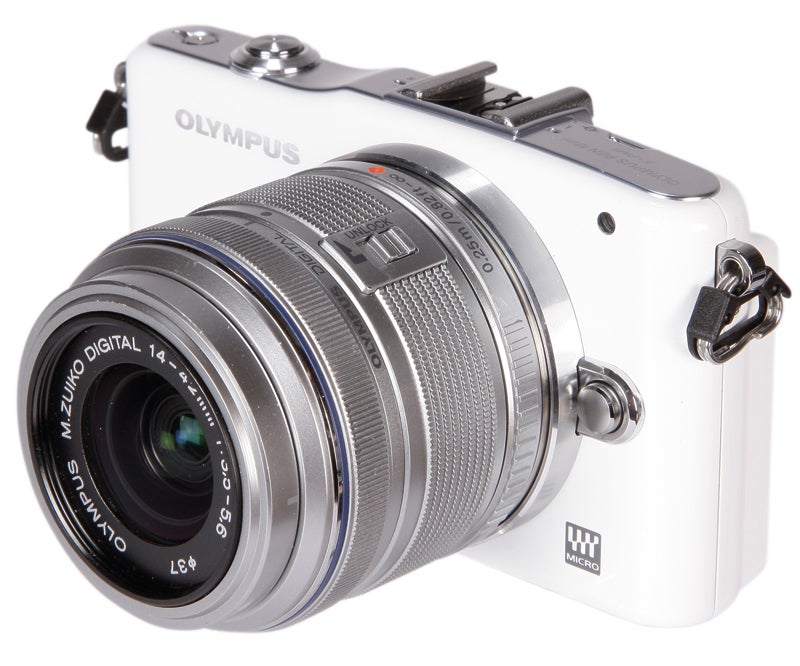Olympus E-PM1 Review
Olympus E-PM1 Review
A pocketable CSC, the Olympus E-PM1 looks to fit PEN functionality in a far smaller shell. The Olympus E-PM1 review follows

Verdict
Pros
- Menu system easy to understand, fast focusing speed, inclusion of hotshoe, build quality
Cons
- Small text, lack of grip, auto white balance can falter, poor chromatic aberration control with kit lens
Key Specifications
- Review Price: £449
The E-PM1 offers image stabilisation in-body, a 12.3MP sensor in the Micro Four Thirds aspect ratio, and aside from stills it’s capable of full HD video recording with stereo sound.
Although it’s possible to mount a viewfinder in the camera’s hotshoe, the camera doesn’t provide one as standard. Instead, there’s a 3in LCD screen with 460,000 dots, which is shaped to the video-friendly 16:9 aspect ratio. On the inside, a 35-point AF system covers all but the peripheral areas of the frame, while the camera’s sensitivity range of ISO 200-12,800 is far-reaching for a camera of this level.
Olympus’s long-standing Art Filters are on hand for instantly applicable stills and movie processing effects, while 24 scene modes and an iAuto setting augment the standard PASM quartet of exposure options. A maximum continuous shooting rate of 5.5fps is also available, dropping to 4.1fps if image stabilisation is activated, and while there’s no flash on the body itself a hotshoe-mounted alternative is supplied as standard.
Olympus E-PM1 Review – Design
The E-PM1 isn’t particularly refined in its design, largely because it fails fails to offer a grip, but also because its smooth, bland body just begs for a few additional details to make it appear more complete. Buttons are a little on the small side, as is the menu pad dial, although the latter can be easily rotated by the thumb.
Commonly used options, such as focusing area and drive mode, can be directly accessed through the menu pad, while everything else can be brought up by pressing the OK button. Some may find the text of the graphic user interface to be a bit too small, though the system makes good use of colour to illustrate Art Filters and Scene options although the menu system is simple to get accustomed to.
Olympus E-PM1 Review – Performance
Olympus describes the E-PM1’s focusing system as being ‘extremely fast’, and in good light that much is true. There’s little to separate its performance from that of the GF3, although it does tend to slow down a touch when there is less light. Its startup time is also a little behind the others, taking around one second.
It manages imressive shot-to-shot times, with a burst of eight raw and JPEG frames being cleared out to the card in an impressive 11 seconds, and the camera ready to shoot while still processing sooner than the others.
Olympus E-PM1 Review – Image Quality
The E-PM1’s main headache appears to be Auto White Balance, in that it often errs where the other models do not, usually towards warmer colour casts. This leads to its colours appearing a touch more saturated than expected. Its exposures are also a little brighter than the others; in some cases this makes them more suitable for immediate use, though in others the more balanced results of the NEX-C3 are preferable. JPEG results show good contrast over their raw counterparts, though.
Verdict
An easy to use camera with only a few small qualms, making it recommended for newcomers to the system
Trusted Score
Score in detail
-
Value 9
-
Design 9
-
Features 9
-
Image Quality 9
-
Performance 9

